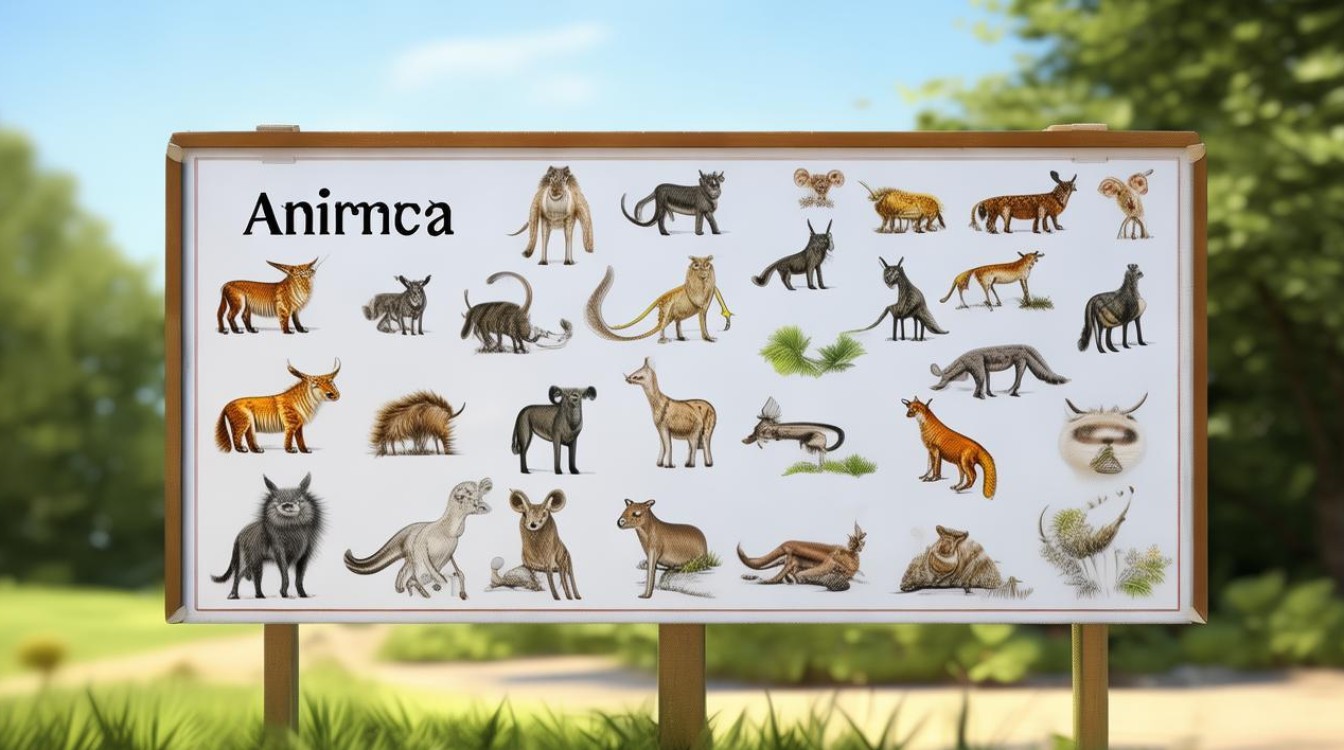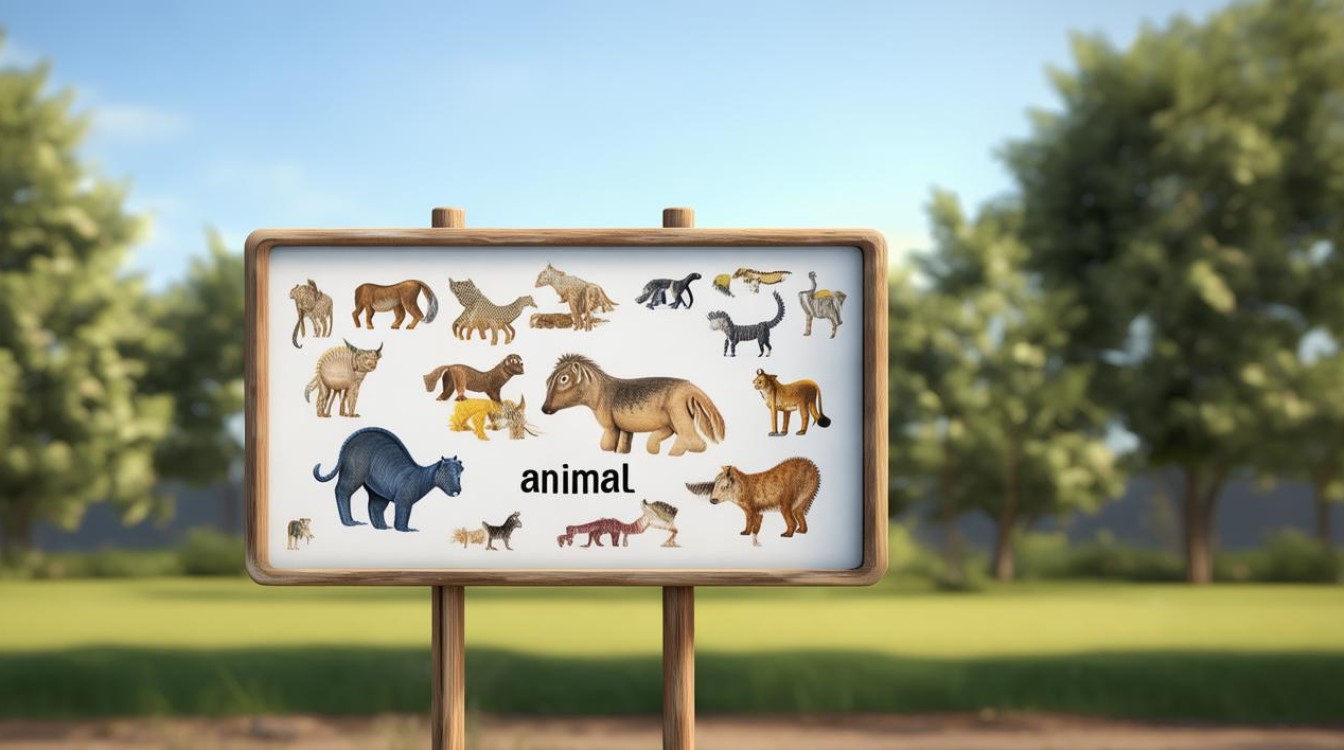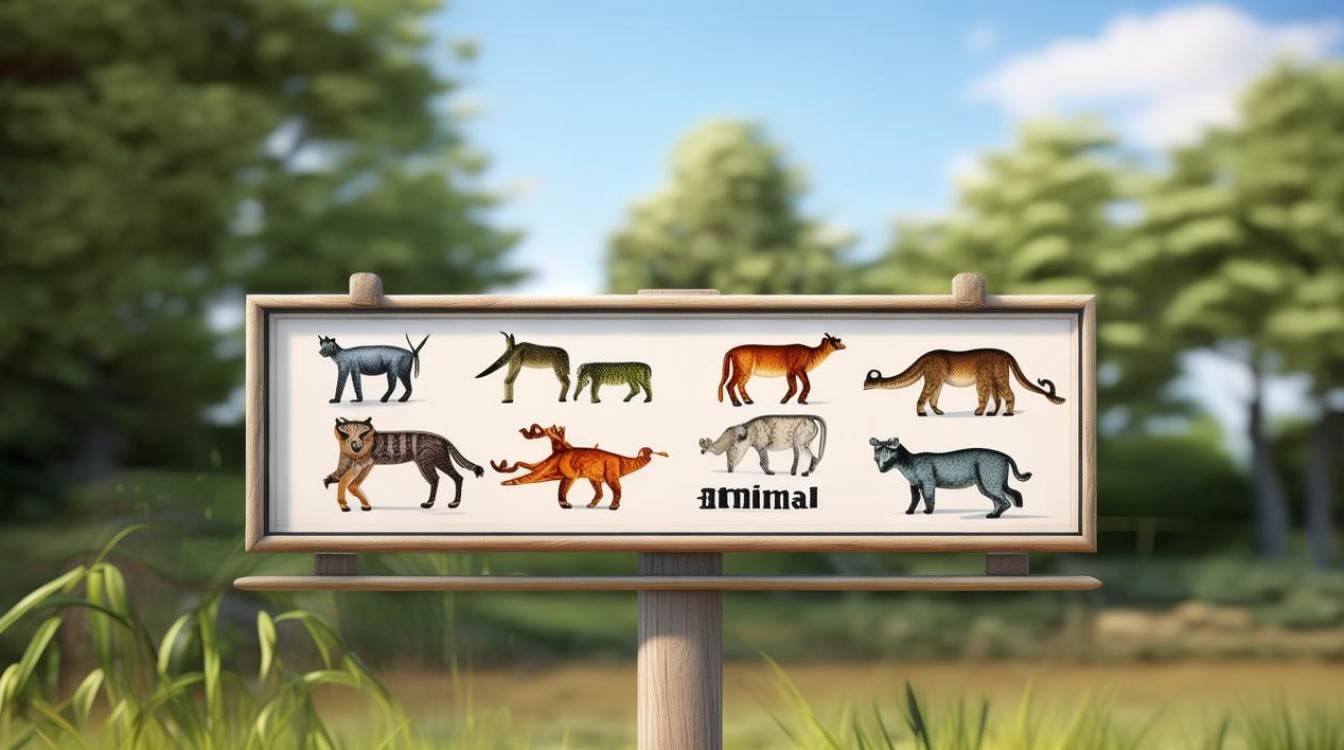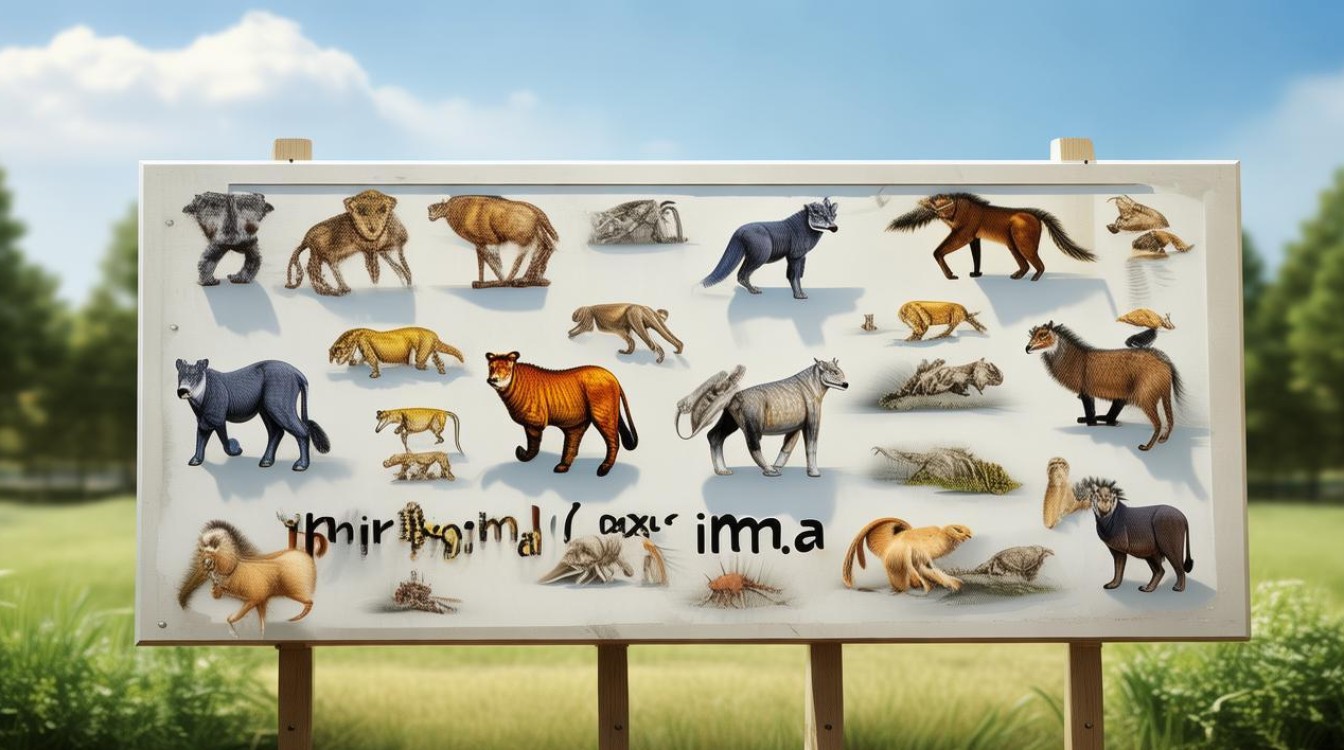常见家养动物(Domestic Animals)
-
Dog [dɒɡ] – 狗

- 例句:The loyal dog guards the house.
- 记忆点:拟声词,类似中文“汪汪”的发音。
-
Cat [kæt] – 猫
- 例句:The cat curled up on the sofa.
- 对比:Kitten(小猫) vs. Cat(成年猫)。
-
Rabbit [ˈræbɪt] – 兔子
- 例句:Rabbits love to eat carrots.
- 联想:长耳朵(ear)和蹦跳(hop)的动作。
野生动物(Wild Animals)
-
Lion [ˈlaɪən] – 狮子
- 例句:The lion is called the "King of the Jungle."
- 文化:象征勇气,常见于谚语如“lion’s share”(最大份额)。
-
Elephant [ˈelɪfənt] – 大象
- 例句:Elephants use trunks to drink water.
- 特点:Trunk(象鼻)和tusk(象牙)是关联词。
-
Giraffe [dʒɪˈrɑːf] – 长颈鹿
- 例句:Giraffes have long necks to reach leaves.
- 拼写:注意双写“f”和结尾的“e”。
鸟类(Birds)
-
Eagle [ˈiːɡl] – 鹰
- 例句:Eagles soar high in the sky.
- 象征:代表力量与自由,如“eagle eye”(敏锐目光)。
-
Penguin [ˈpeŋɡwɪn] – 企鹅

- 例句:Penguins waddle on ice.
- 趣味:南极动物,不会飞但擅长游泳。
-
Owl [aʊl] – 猫头鹰
- 例句:Owls hunt at night.
- 习语:“as wise as an owl”(聪明如猫头鹰)。
水生动物(Aquatic Animals)
-
Dolphin [ˈdɒlfɪn] – 海豚
- 例句:Dolphins communicate with clicks.
- 特点:高智商,常与人类互动。
-
Shark [ʃɑːk] – 鲨鱼
- 例句:Sharks have sharp teeth.
- 注意:区分“shark”(鲨鱼)和“whale”(鲸鱼)。
-
Octopus [ˈɒktəpəs] – 章鱼
- 例句:An octopus has eight arms.
- 词根:“octo-”表示“八”,如October(十月,古罗马历第八个月)。
昆虫与小型生物(Insects & Small Creatures)
-
Butterfly [ˈbʌtəflaɪ] – 蝴蝶
- 例句:Butterflies flutter from flower to flower.
- 变形:Caterpillar(毛毛虫)→ Butterfly(蝴蝶)。
-
Ant [ænt] – 蚂蚁
- 例句:Ants work together in colonies.
- 短语:“ants in one’s pants”(坐立不安)。
-
Spider [ˈspaɪdər] – 蜘蛛

- 例句:Spiders spin webs to catch prey.
- 科学:Arachnid(蛛形纲动物)是正式分类。
动物相关动作与特征
-
Roar [rɔːr] – 吼叫(狮、虎)
例句:The lion roars to mark territory.
-
Hibernate [ˈhaɪbəneɪt] – 冬眠
例句:Bears hibernate in winter.
-
Camouflage [ˈkæməflɑːʒ] – 伪装
例句:Chameleons use camouflage to hide.
趣味动物冷知识
- Platypus(鸭嘴兽)是少数产卵的哺乳动物。
- Cheetah(猎豹)是陆地上速度最快的动物。
- Kangaroo(袋鼠)的幼崽叫“joey”。
学习动物单词时,建议结合图片、视频或动物园实地观察,看到猴子时联想“monkey”,听到鸟鸣回忆“sparrow”或“parrot”,自然场景能加深记忆,比死记硬背更有效。

英语中许多动物名称源自拟声或古语,cuckoo”(布谷鸟)模仿鸟叫声,“rhinoceros”(犀牛)来自希腊语“nose-horn”,了解词源能让单词更有生命力。
不妨尝试用动物单词造句或编故事。“The quick fox jumps over the lazy dog.” 这句话包含了英语所有26个字母,是练习拼写的经典例句。
语言学习需要持续接触,动物世界恰好提供了丰富的素材,下次带孩子去公园或看纪录片时,不妨指着屏幕问:“What’s this in English?” 答案或许就在你眼前。


